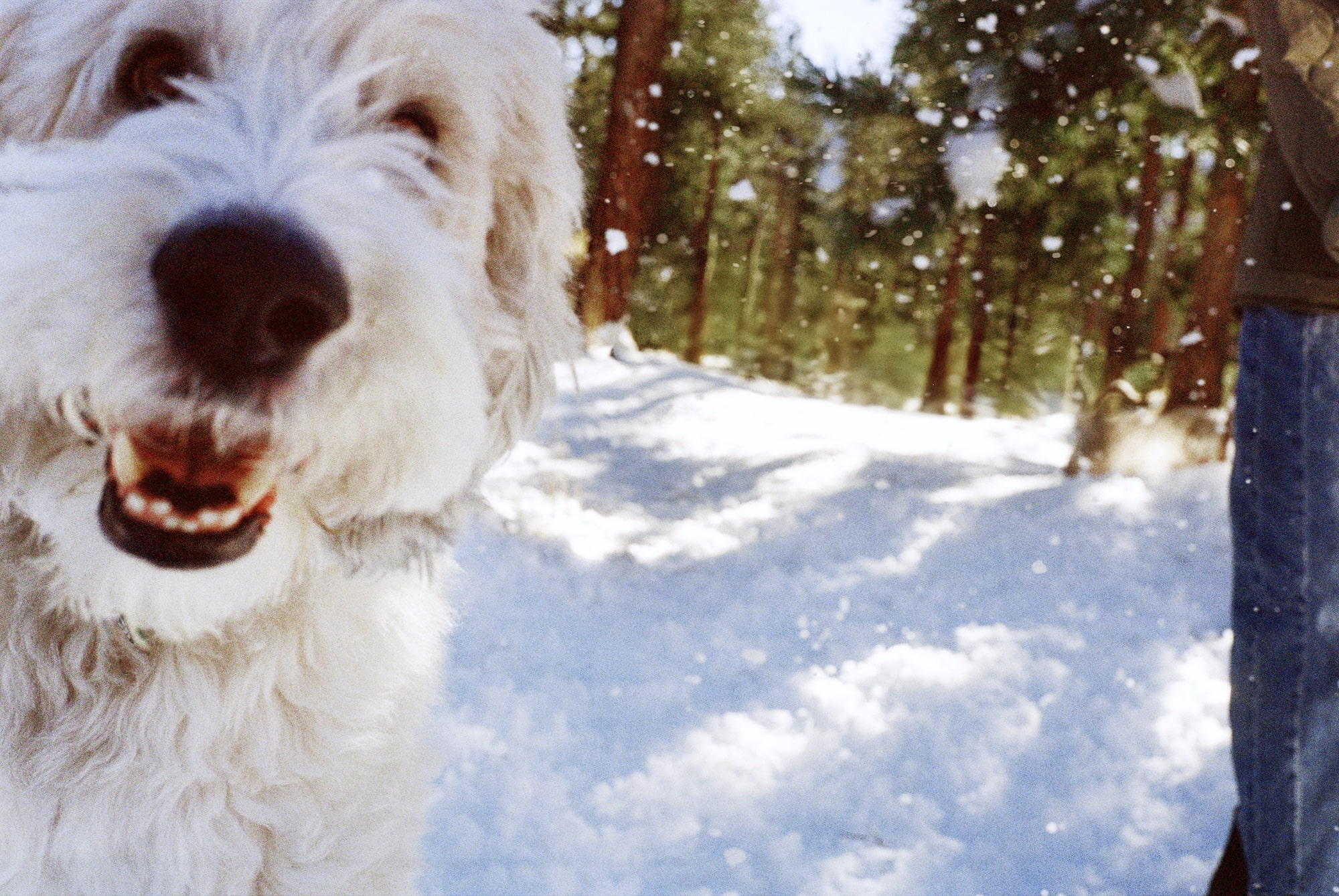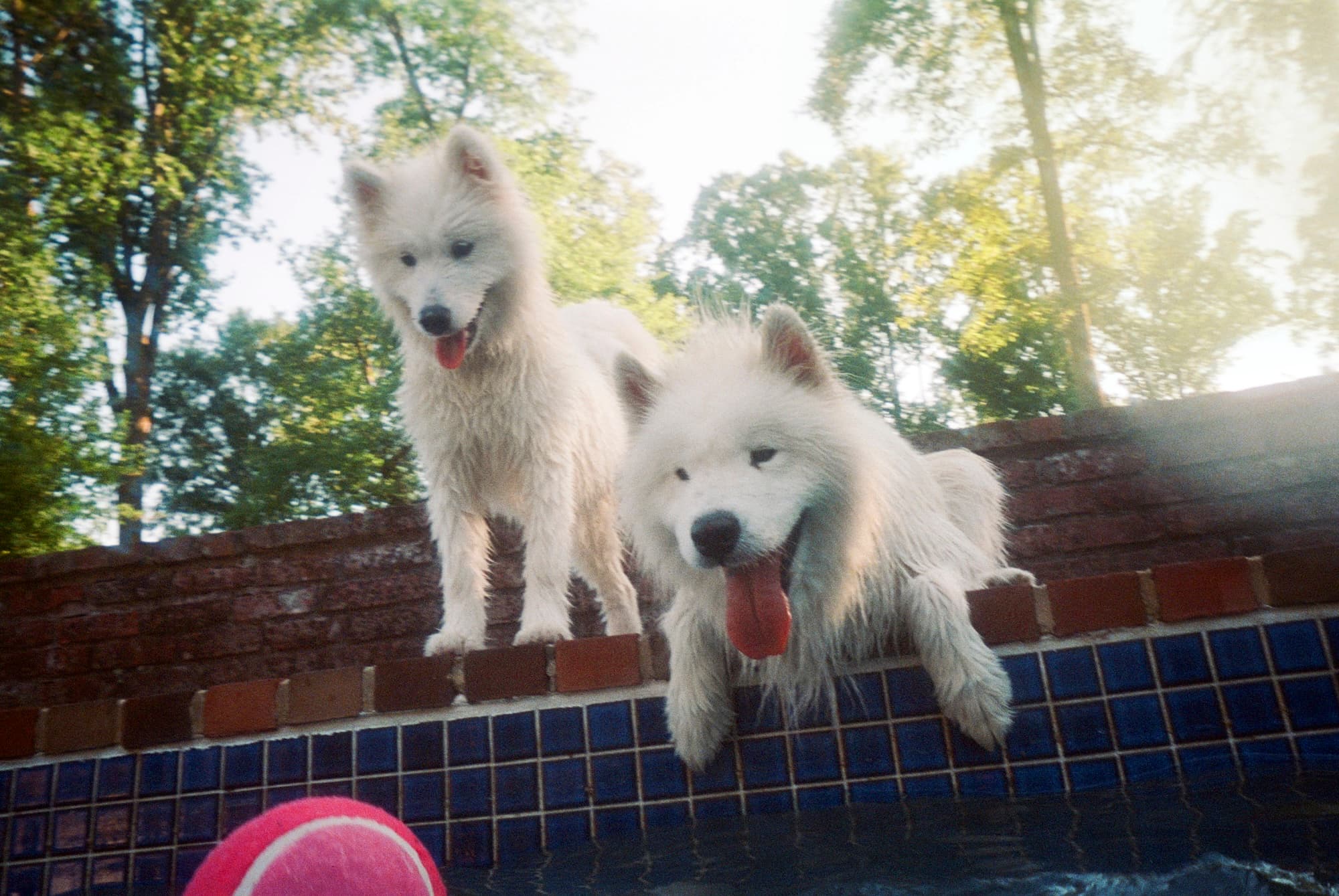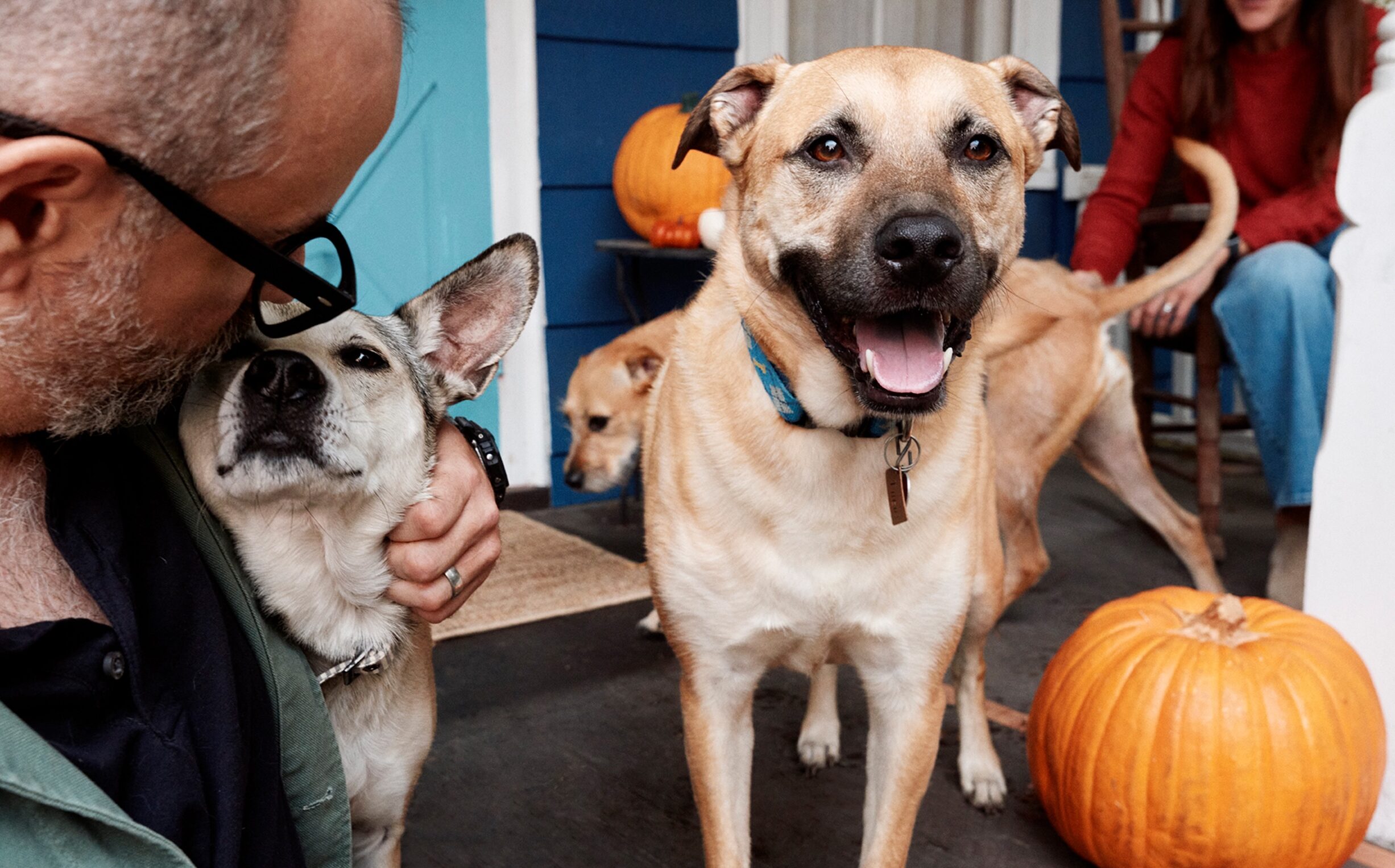If you’ve seen a dog who seems like they can’t stop chasing their tail, chewing their paws, or snapping at imaginary prey, you may have wondered whether dogs have their own version of obsessive-compulsive disorder (OCD).
The short answer is: Yes, pretty much. The longer answer is below.
The diagnosis for dogs with compulsive behaviors like those described above is canine compulsive disorder, or CCD. Why not OCD? Basically, because dogs cannot tell us whether they’re obsessed with something.
Dr. Nicholas Dodman, a professor emeritus at Tufts who has studied dogs’ behavior for many years, puts it this way: “Dogs’ thoughts are inaccessible.” Having said that, he thinks dogs’ compulsive behaviors may sometimes have the same roots as humans’. “I believe some of the patients I’ve seen,” he says, “actually do obsess.”
Here are details on how to recognize CCD, what causes it, and how to help a dog suffering from it.
What are the signs of CCD?
Dogs with CCD don’t all show the same behaviors—like humans with OCD, their compulsions vary.
Dr. Zazie Todd, a psychologist and certified dog trainer who wrote Bark! The Science of Helping Your Anxious, Fearful, or Reactive Dog, says: “Dogs can have a range of obsessive behaviors—including circling/chasing their tail, snapping at nonexistent flies, excessive grooming or nibbling on their skin, and freezing or staring for long periods.”
More signs that a dog may have CCD include flank sucking, pacing, and chewing objects they shouldn’t. Dogs who compulsively lick or chew on themselves may become physically injured; for example, lick granuloma—also known as acral lick dermatitis—is a skin lesion that appears when a dog licks an area on their body too much. The irritation itself may then lead them to lick it even more.
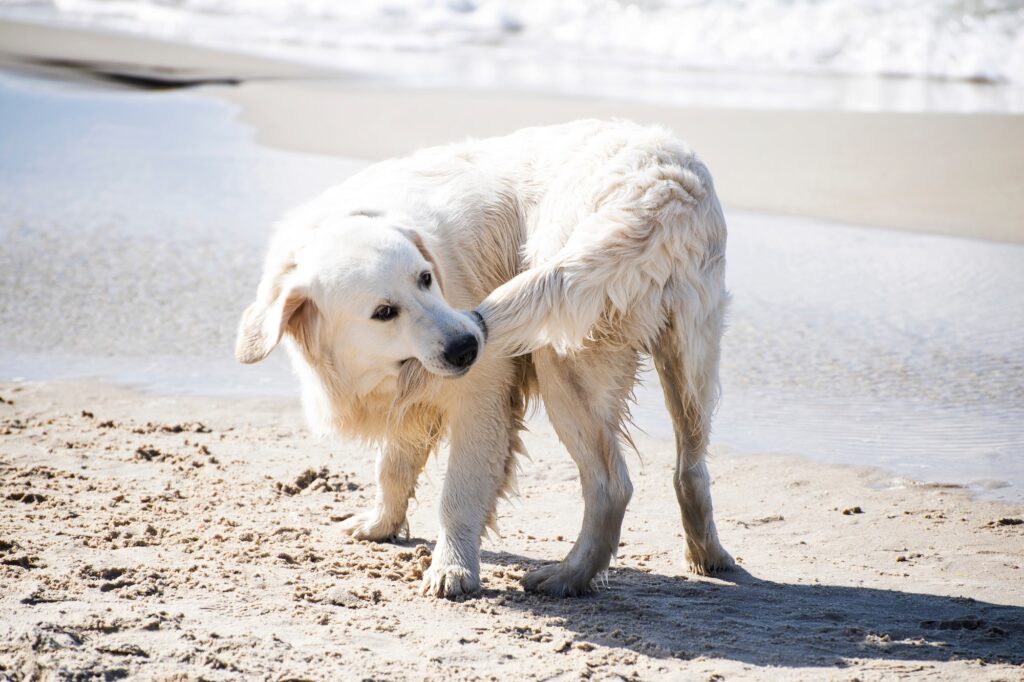
How common is CCD?
Studies vary on how common compulsions are in dogs, but a 2020 survey found that, out of 13,700 Finnish pet dogs, 16% showed such behaviors. A 2019 study found a similar number. Another commonly cited number is 2%, as estimated in 2002 by the Director of Purdue University’s Animal Behavior Clinic. Regardless of the precise figure, it’s safe to say that many dogs engage in compulsive behaviors.
Why do dogs develop compulsive behaviors?
One factor in some dogs’ compulsive behaviors may be the lifestyles they lead in a human-controlled world.
Dr. Marc Bekoff, professor emeritus of Ecology and Evolutionary Biology at the University of Colorado, Boulder, says that free-ranging and wild dogs are less likely than pets to display compulsive behaviors.
“I’ve seen what one might call obsessive behavior in various wild/free-ranging animals, including dogs and even some birds,” he says—but he suspects it’s much less common for them than homed dogs. “There’s more that wild and stray dogs need to do to take care of themselves and perhaps other individuals,” he says, “and there likely are more outlets for them to satisfy whatever they’re obsessing about.” In other words: free-ranging dogs have less opportunity to worry without suffering serious consequences, and more freedom to address things that are worrying them.
“But,” Dr. Bekoff is sure to add, “this doesn’t mean [obsessive behavior] doesn’t occasionally occur” in wild or stray dogs.
Dr. Bekoff emphasizes the challenge of figuring out whether an animal is obsessing—to really know, you’d need a lot of information about their personality and the context of their behavior.
Dogs who are mistreated—confined for extended periods, isolated, or chained—are more likely to develop CCD. Boredom, too, can be a culprit. So keeping your dog’s life interesting and fun can reduce their risk.
One way that humans can inadvertently increase their dogs’ chances of developing compulsive behaviors is by using laser pointers to play with them. Some dogs who chase the light from laser pointers start pursuing reflections and other stimuli that they can’t possibly catch. This, combined with the toys’ physical risks, is why you should choose other options for your dogs’ exercise needs.
Genetics may also play a role, making some dogs more likely to develop CCD than others.
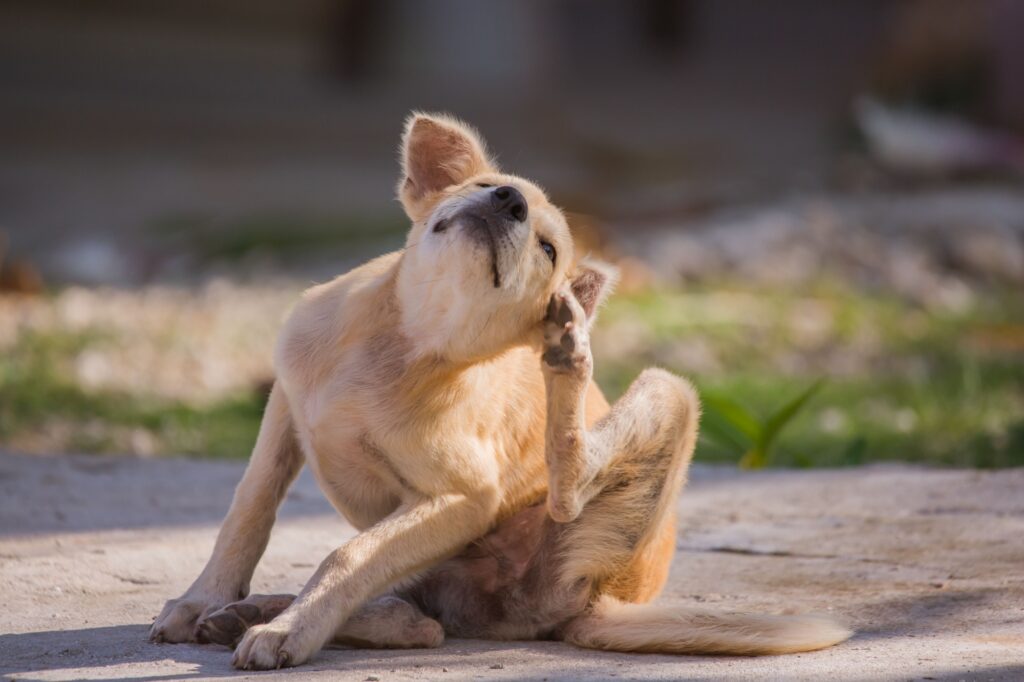
How do veterinarians diagnose CCD?
To diagnose CCD, a veterinarian will usually have to rule out physical causes of a dog’s behavior. For example: a dog who is scratching herself all the time could be doing so compulsively, but might also be itchy due to allergies. The main thing here is that, if you think your dog’s behavior is compulsive, you should bring them to the veterinarian for a full examination.
How is CCD treated?
Dr. Dodman says that treatment for CCD can include medication and enrichment. He’s seen drugs reduce or stop dogs’ compulsive behaviors—and enrichment can be transformative as well.
“In dogs, we don’t have cognitive therapy,” says Dr. Dodman, “because you can’t converse with them. What we do instead is environmental enrichment—in particular giving them a job that is very similar to what that breed was bred to do.” Dr. Dodman remembers one dog whose light- and shadow-chasing behaviors disappeared when he was given a job he liked. The dog was a member of a breed known for herding. “The dog was trained to herd sheep,” Dr. Dodman says, “and the OCD melted away.”
Generally speaking, it’s beneficial for a dog’s mental health when they get the opportunity to perform as many of their natural behaviors as possible. Sniffy walks, brain games, and other such activities are good options.
Dr. Todd says that steps like giving your dog a predictable routine for events like meals and walks can help, too.
Aside from the behavioral aspect of CCD, dogs injured by their compulsive behavior may require treatment for their physical wounds. In the case of acral lick dermatitis, a veterinarian might prescribe medications and/or recommend measures like an Elizabethan collar to prevent your dog from licking the spot while it heals.
How can you tell if your dog’s behavior is a sign of CCD?
The behaviors that dogs perform compulsively would often be normal—within certain limits. But you’ll need to intervene if they become so frequent that they interfere with the dog’s health and happiness. The criteria are similar to those a professional would use to evaluate whether a person’s behavior is a problem. For example, it’s healthy to wash your hands before eating or after going to the bathroom. But doing so constantly can cause a wide range of difficulties. And, Dr. Dodman points out, “the dogs that lick their wrists do look very much physically like hand-washers.”
It can be tricky to know where the line is between your dog occasionally grooming or scratching themselves and having a problem. If you’re not sure, don’t hesitate to ask a professional.
“Only a veterinarian can diagnose” CCD, Dr. Todd says—so, ultimately, that’s who you’ll need to ask.
And once you’ve made changes that benefit your dog, keep it up. Dr. Dodman remembers talking to a human with OCD who would compulsively pull on his beard. At one point, the man took a trip to Canada, where he’d hike, cook outdoors, and take care to avoid wolves. “Basically,” Dr. Dodman says, “he was living the life of a real hominid.” While he lived this lifestyle, his symptoms abated. But he couldn’t live that way forever, and they eventually returned. “The minute he got back… in front of his computer,” Dr. Dodman says, “he started pulling his beard again.”
